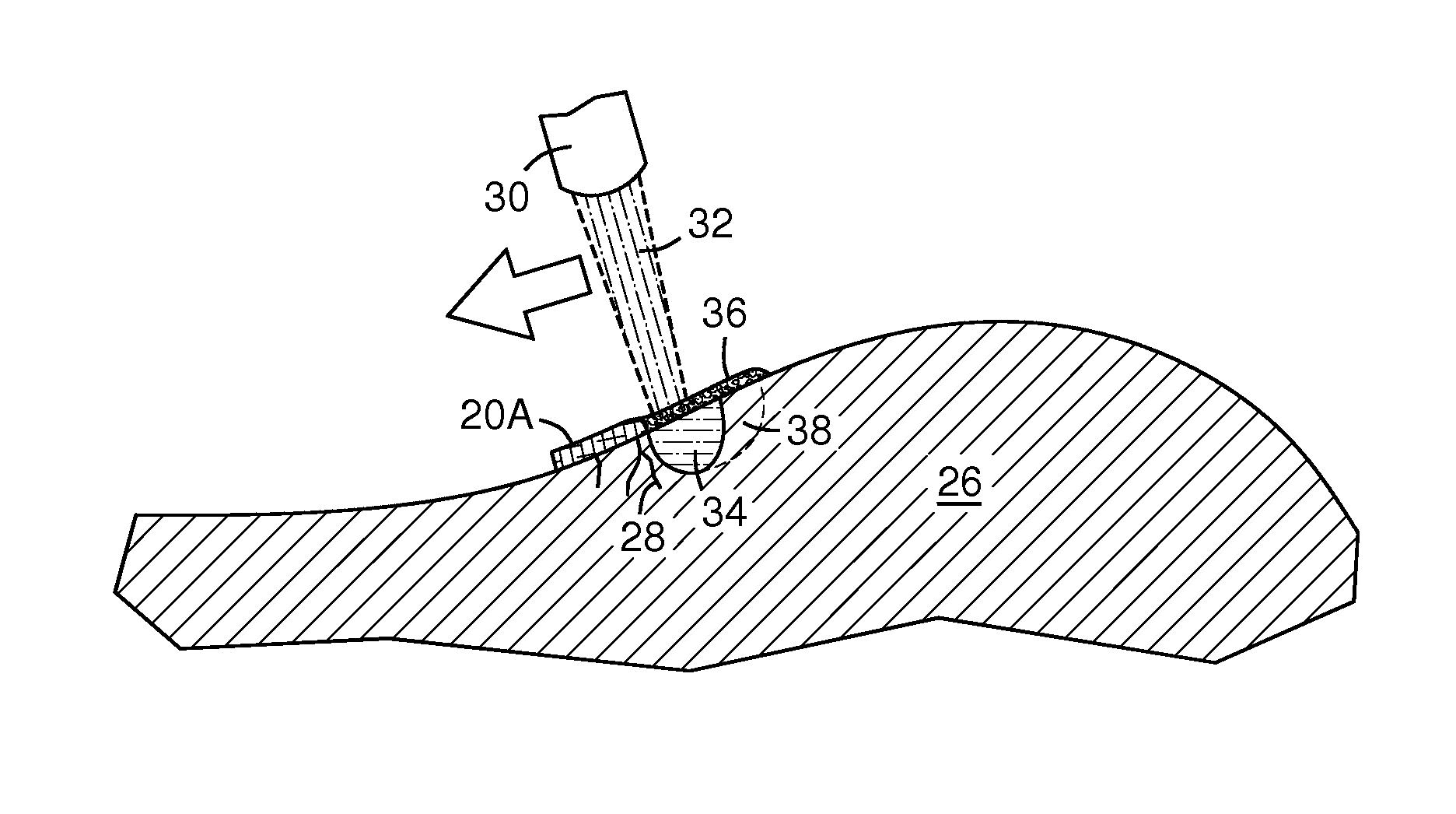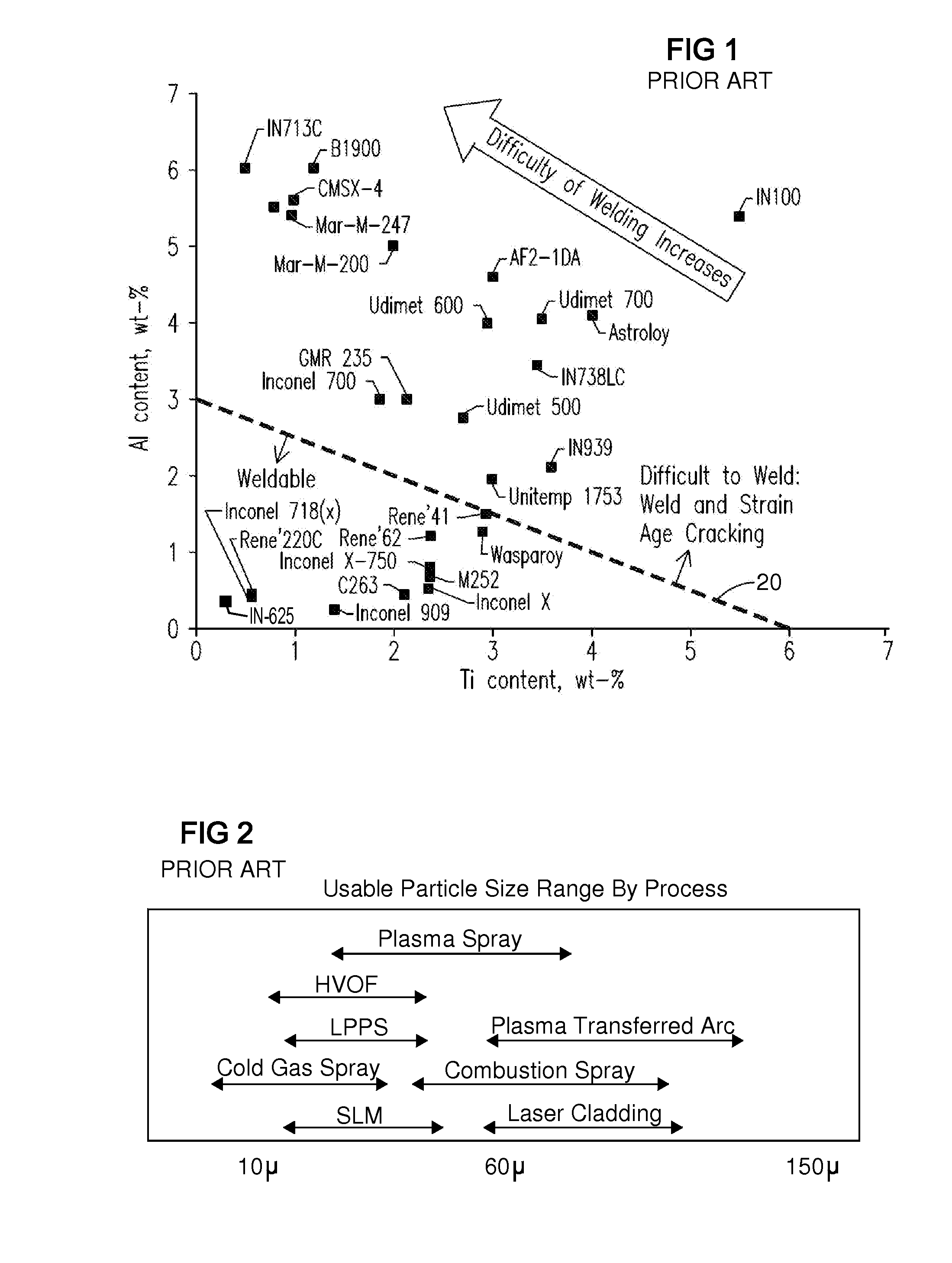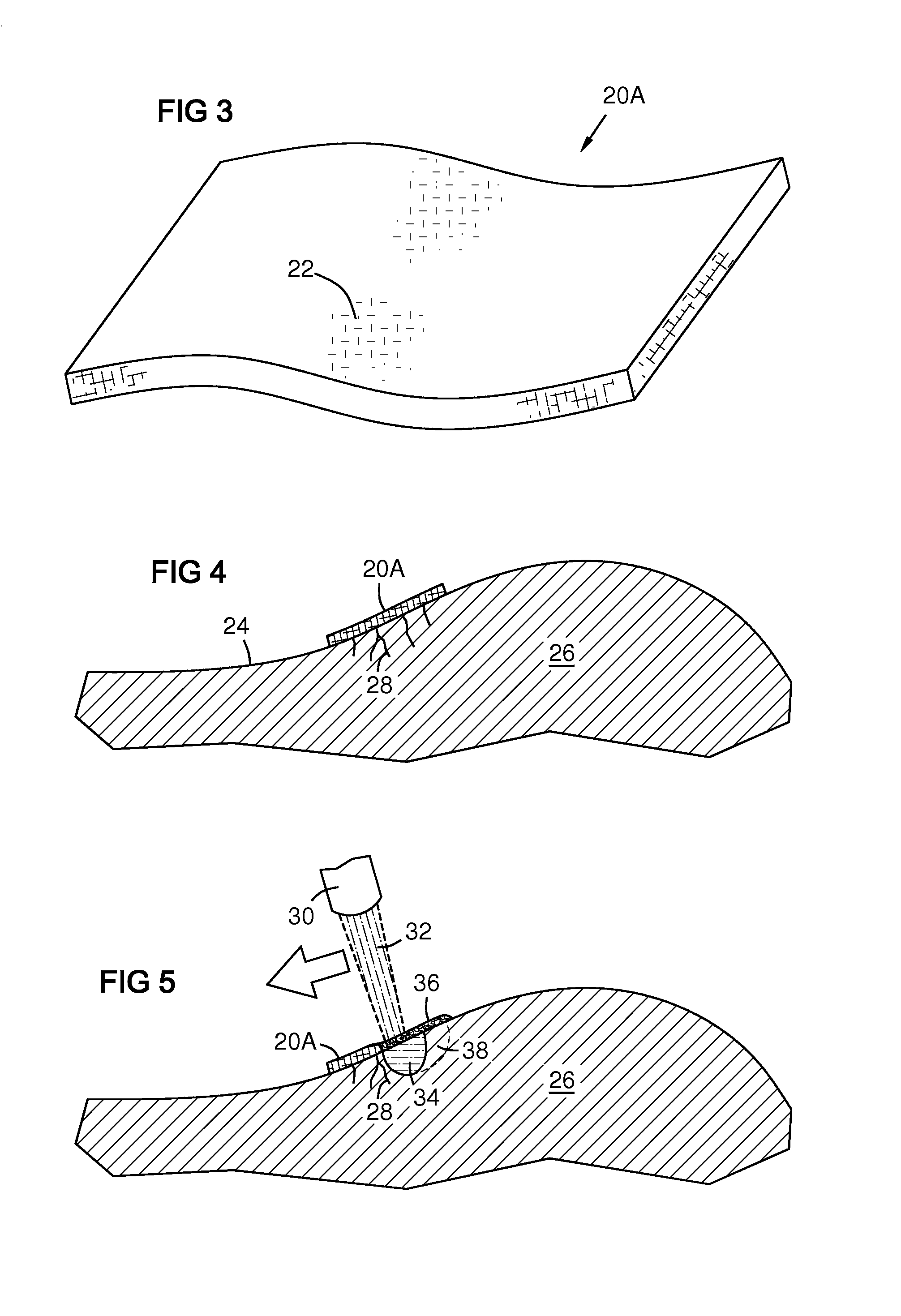Flux sheet for laser processing of metal components
- Summary
- Abstract
- Description
- Claims
- Application Information
AI Technical Summary
Benefits of technology
Problems solved by technology
Method used
Image
Examples
Embodiment Construction
[0015]The inventors have developed a conformable flux sheet, meaning a coherent and flexible sheet or film made of flux, and a process of melting metal surfaces together with the flux sheet for repair and joining thereof. The sheet is placed over a metal surface, and a laser beam is directed onto the sheet. The flux provides beam energy transmission and selective trapping, impurity cleansing, atmospheric shielding, melt surface shaping, melt cooling control, and optional alloy rebalancing, providing crack-free joining and repair of superalloy and other substrate materials without the need for high temperature hot box welding or the use of a chill plate, inert shielding gas, or vacuum environment. The flux sheet may be attached or adhered to curved and non-horizontal surfaces.
[0016]FIG. 3 is a perspective view of a flux sheet 20A embodied as a fabric containing fibers 22 of flux compositions described herein and in the parent application. The fabric may be woven or non-woven. In non-...
PUM
| Property | Measurement | Unit |
|---|---|---|
| Fraction | aaaaa | aaaaa |
| Percent by mass | aaaaa | aaaaa |
| Percent by mass | aaaaa | aaaaa |
Abstract
Description
Claims
Application Information
 Login to View More
Login to View More - R&D Engineer
- R&D Manager
- IP Professional
- Industry Leading Data Capabilities
- Powerful AI technology
- Patent DNA Extraction
Browse by: Latest US Patents, China's latest patents, Technical Efficacy Thesaurus, Application Domain, Technology Topic, Popular Technical Reports.
© 2024 PatSnap. All rights reserved.Legal|Privacy policy|Modern Slavery Act Transparency Statement|Sitemap|About US| Contact US: help@patsnap.com










